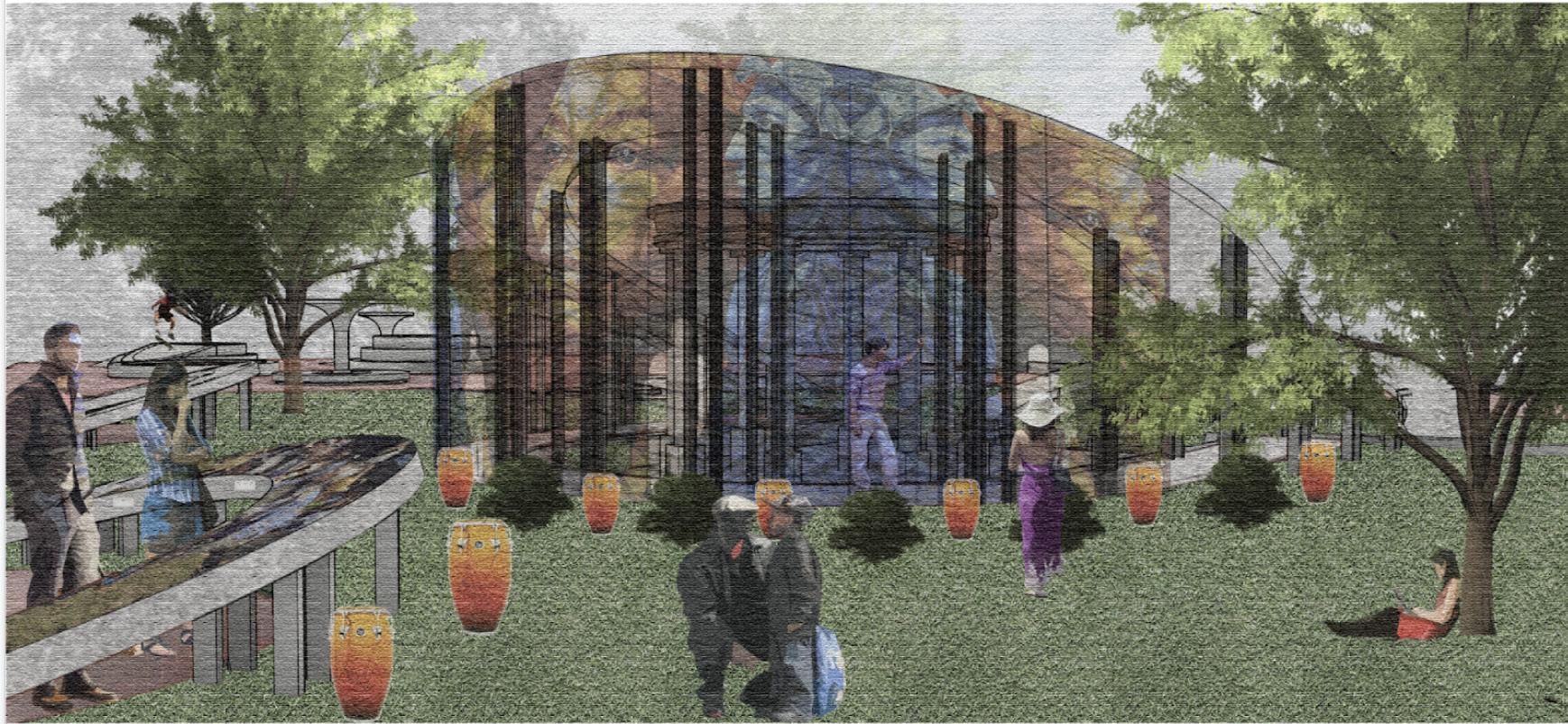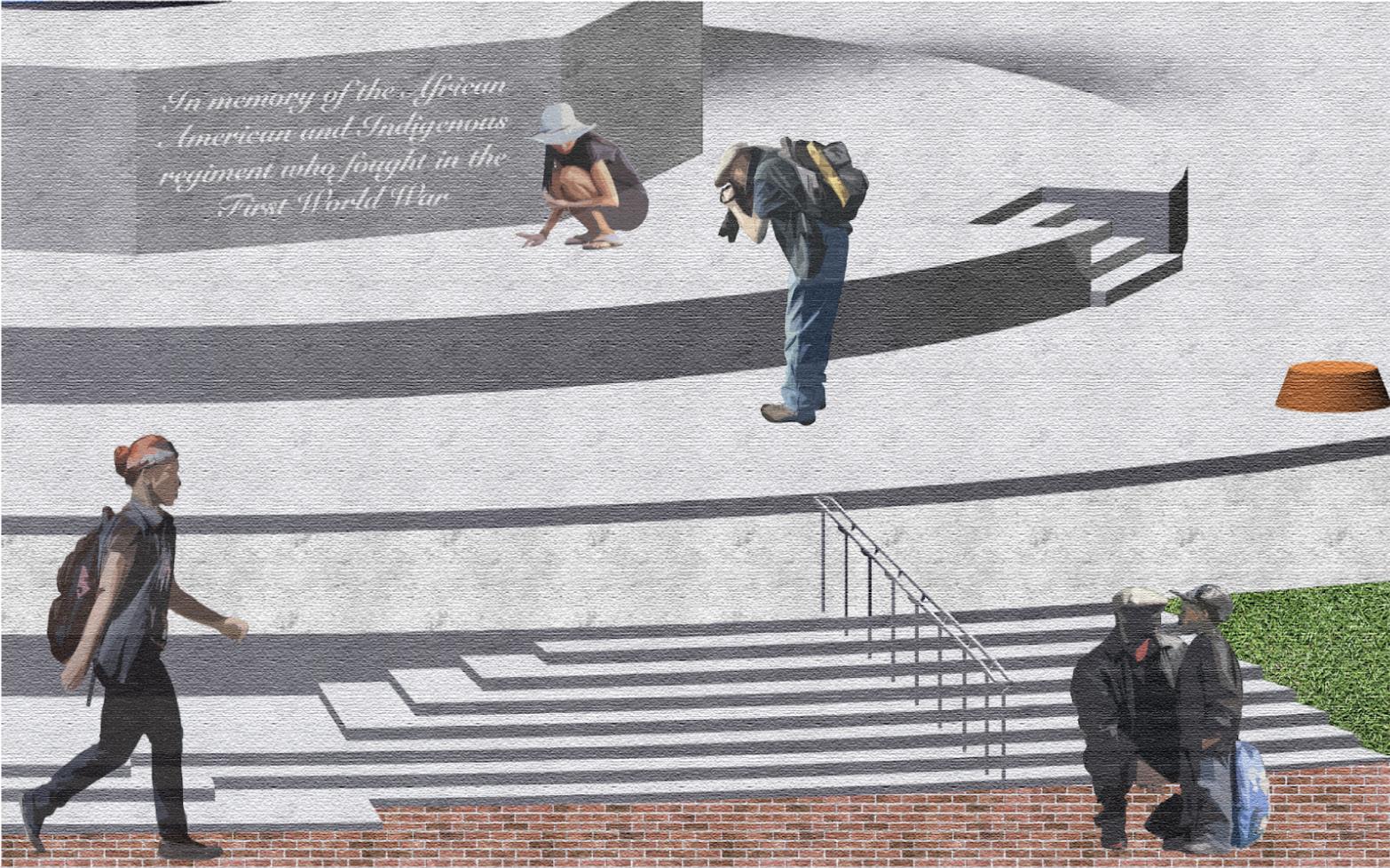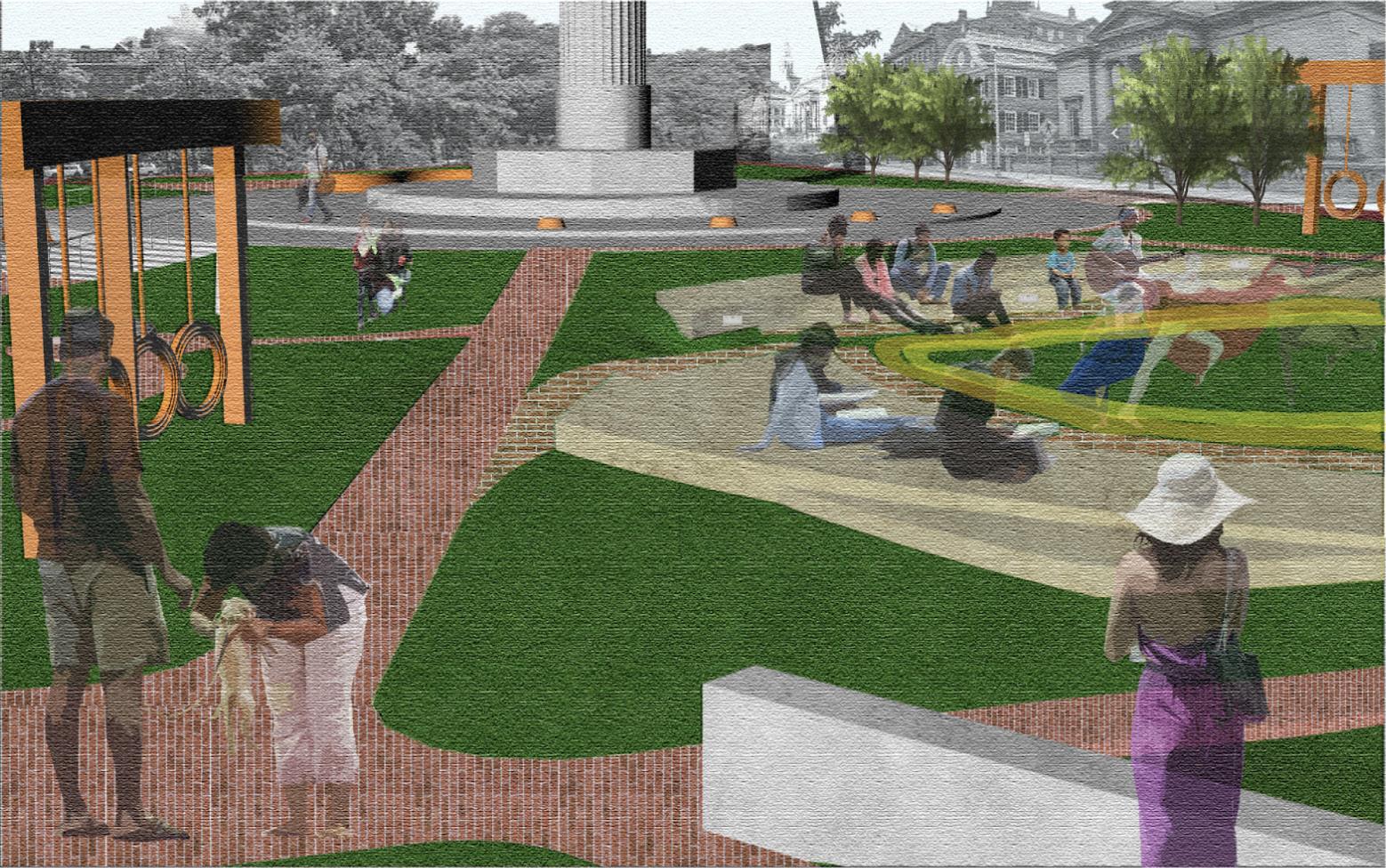
2 minute read
PROVIDENCE PARK
“ A place of unsung history, culture and reclamation ”
A place of protest, play, gathering. A place of education about indigenous and African-American presence in RI. A place of gathering and rest and a place where light and sound carry meaning about justice.
Advertisement
Inspired by the city’s meaning, the protective care of God or of nature as a spiritual power, “Providence Park” is our proposed reactivation of the Memorial Park in Providence, RI, which houses six memorials and none in acknowledgement of the people of color in the city.
Through exploring the design of public space and spaces of play and protest, the larger goal of this studio was to have us think about and deepen our understanding of what it means to design and plan for human encounter — sometimes joyful, sometimes fraught with danger.
We approached this site with the goals to create a space for the coexistence of diverse people and publics, to create an inclusive and welcoming public while also designing intentionally for play and protest to exist safely and comfortably in the same environment.
“At the heart of our endeavors will be the desire to create more accessible, open, diverse cities where people flourish through encounter, whether in play or in fighting for their right not to be harmed or excluded”
Garnette Cardogan
Site Occupants
Site Exploration And Proposal
Students
We noticed we were rippling areas of gathering, reflection, rest, and procession throughout the site. Using existing curves and implied curves in areas were play, protest, learning, and rest happen, we established an axis of play, guiding movement & the experience. Observing how the three site occupants; skaters, students and families gathered in 3 respective parts of the site, our axis guiding movement along the part was futher instrumental in guiding program in terms of the areas for gathering, reflction and rest as well as the moments of procession or combined program. The axis has been designed to be activateed by light, sound and activitiy.
Skaters
Current Site Observations
Families
The site, currently known as the Memorial Park has been dedicated to housing six important monuments as illustrated in the diagram above. Located across downtown Providence and at the bottom of College Hill, current site occupants are students, skaters and families. The team noticed a lack of dedication to people of color and indegenous tribes in RI and proposd dedicating a memorial to this group on the site while also focusing on designing a space for public encounter, in play, protest, rest and gathering.

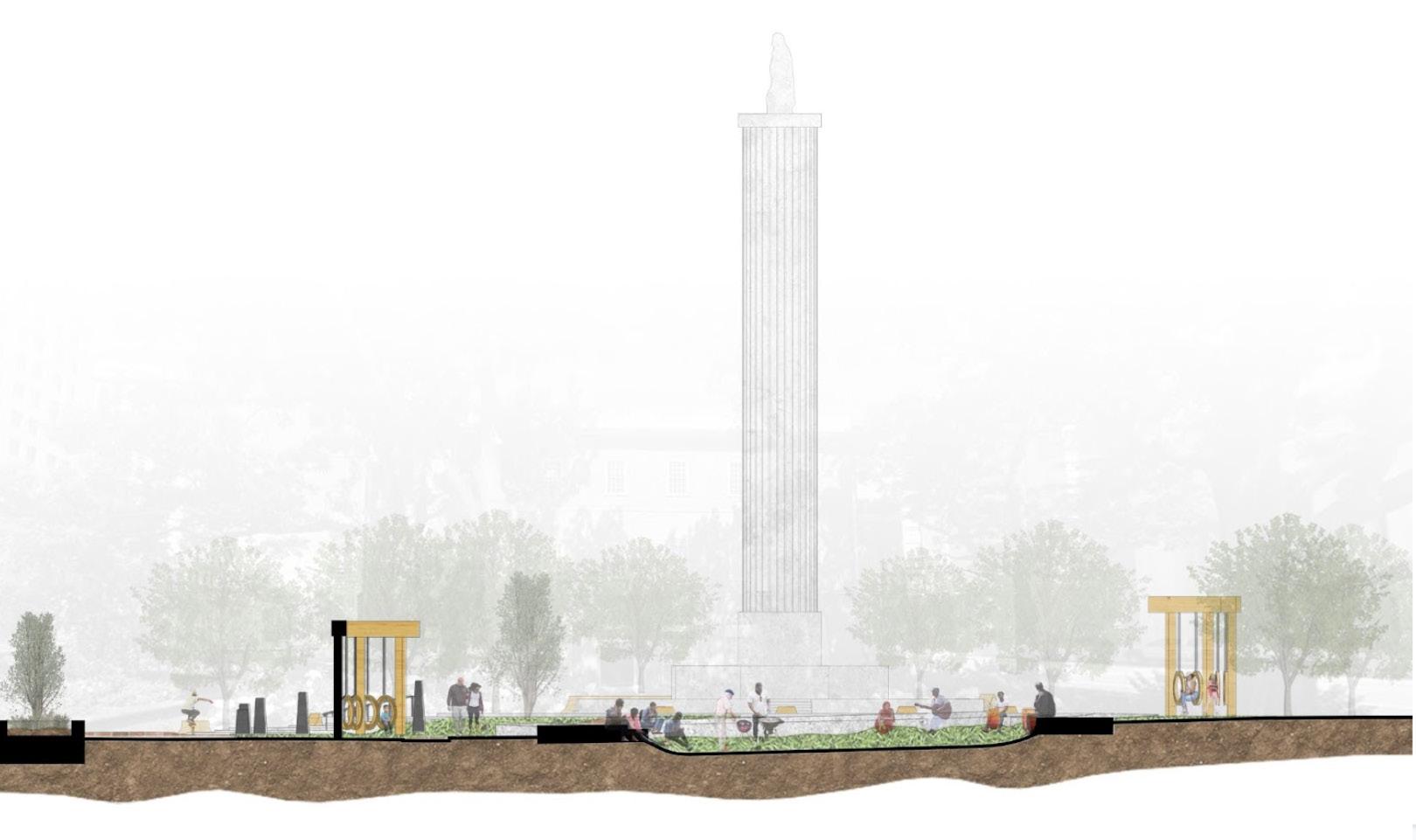
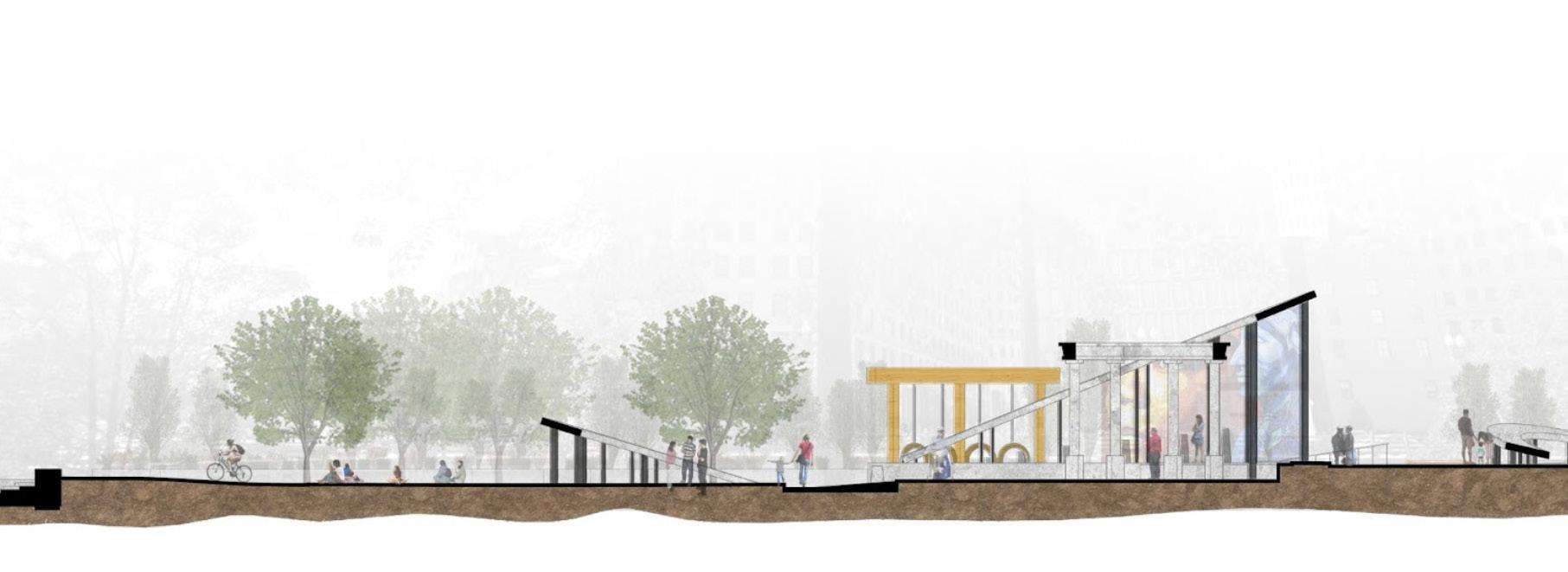
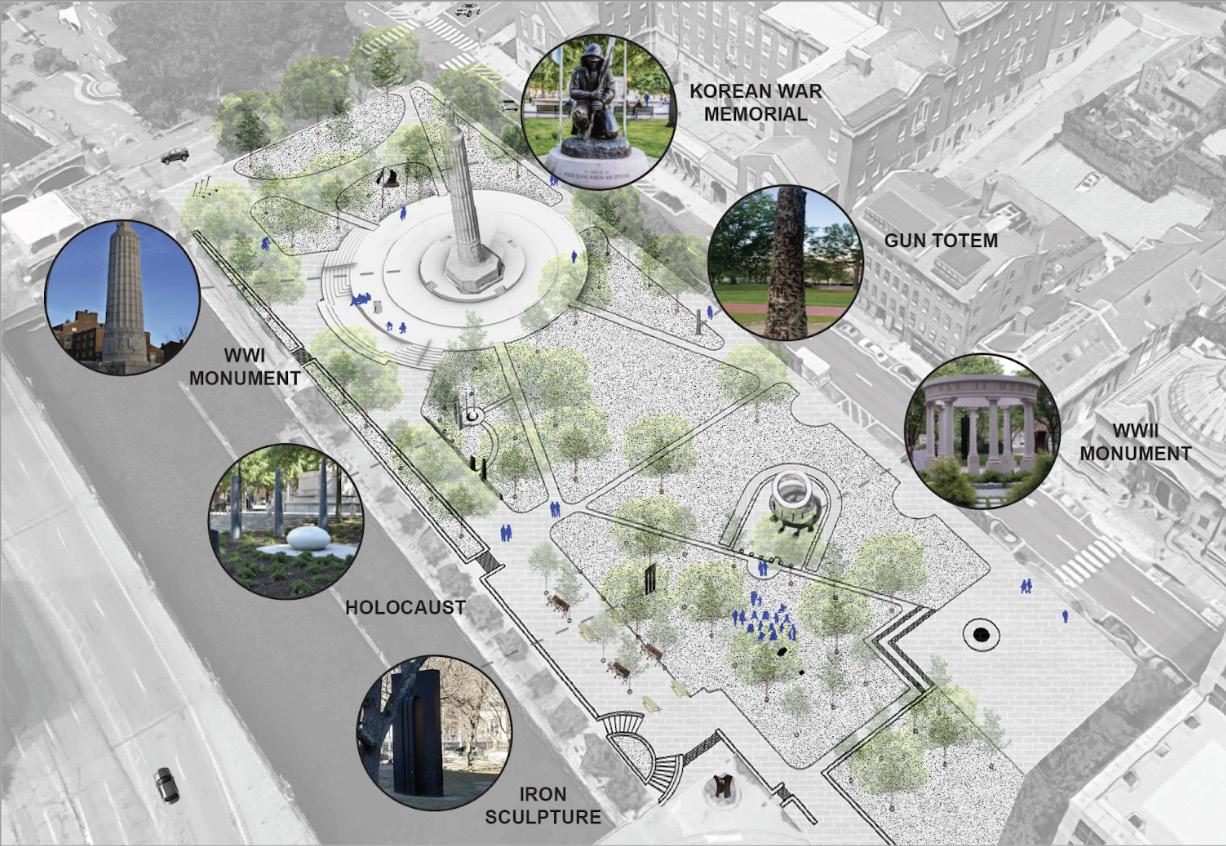
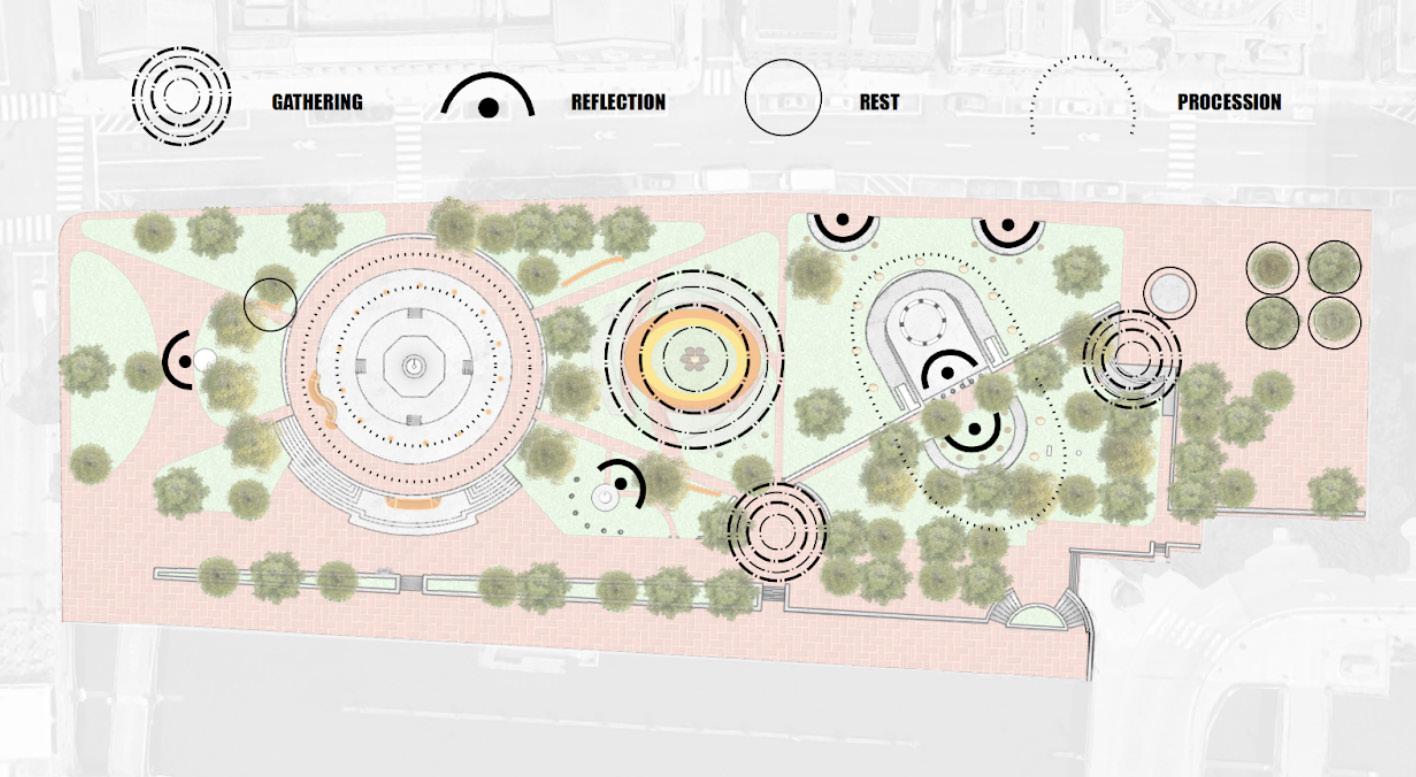
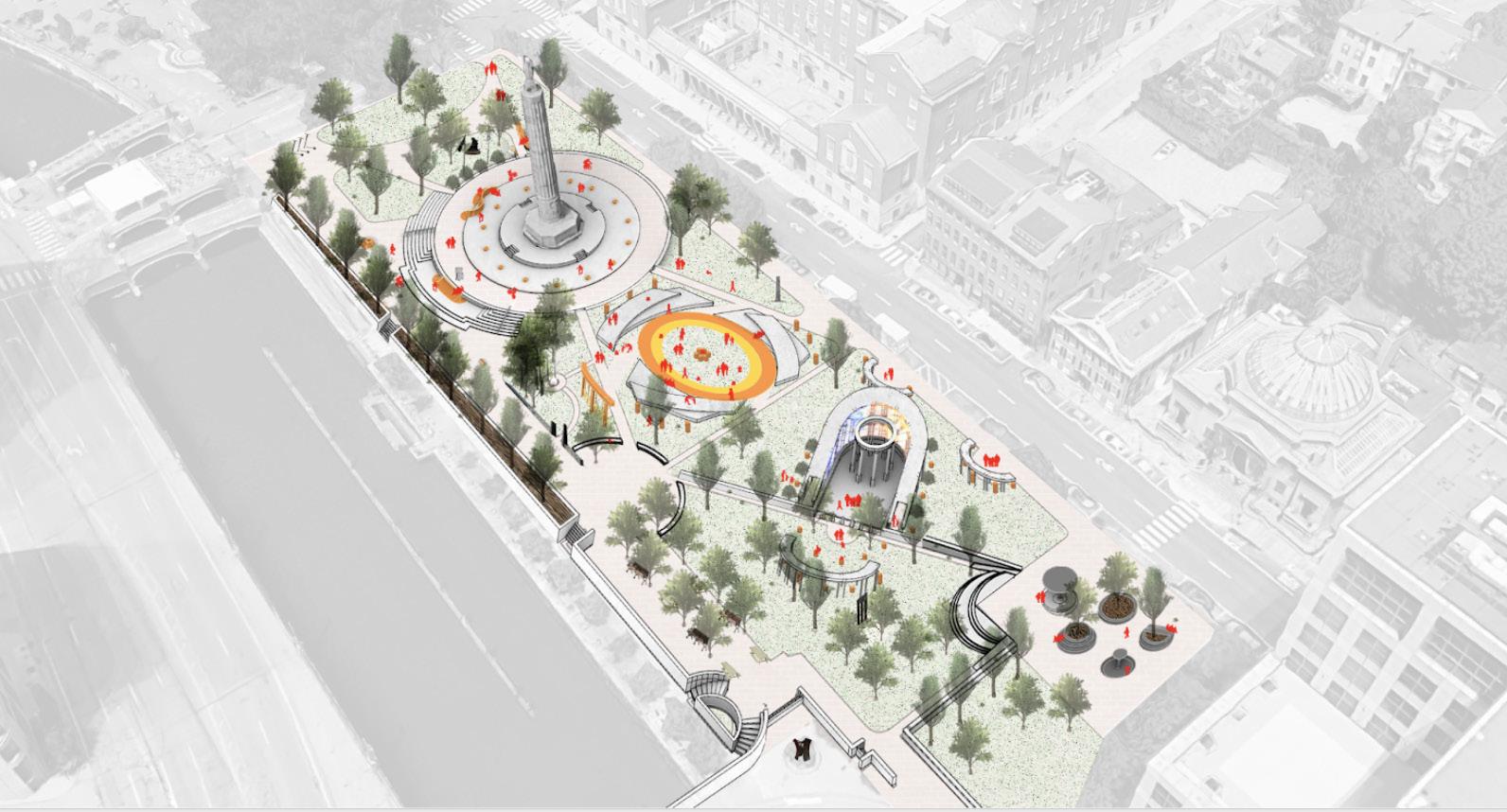
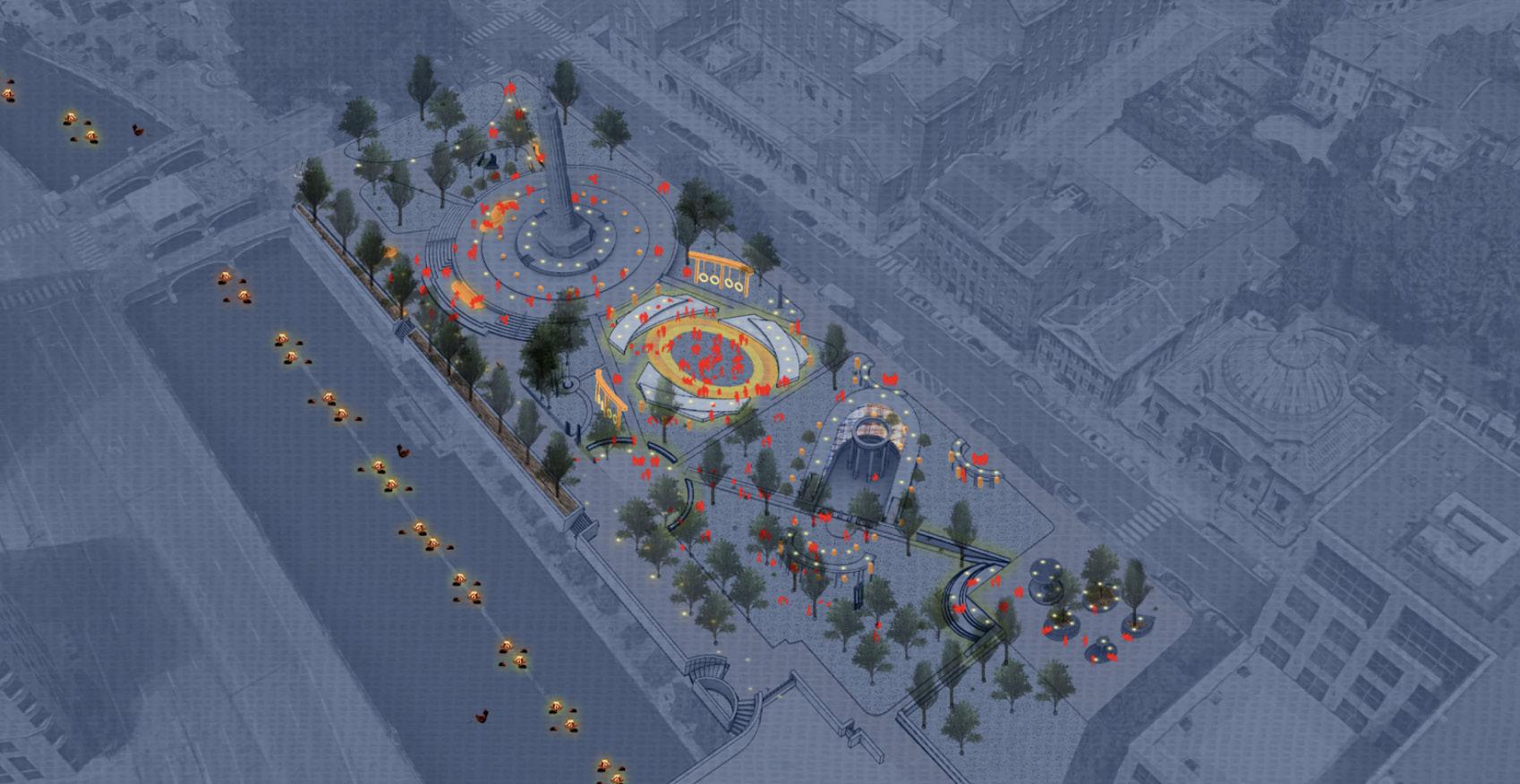
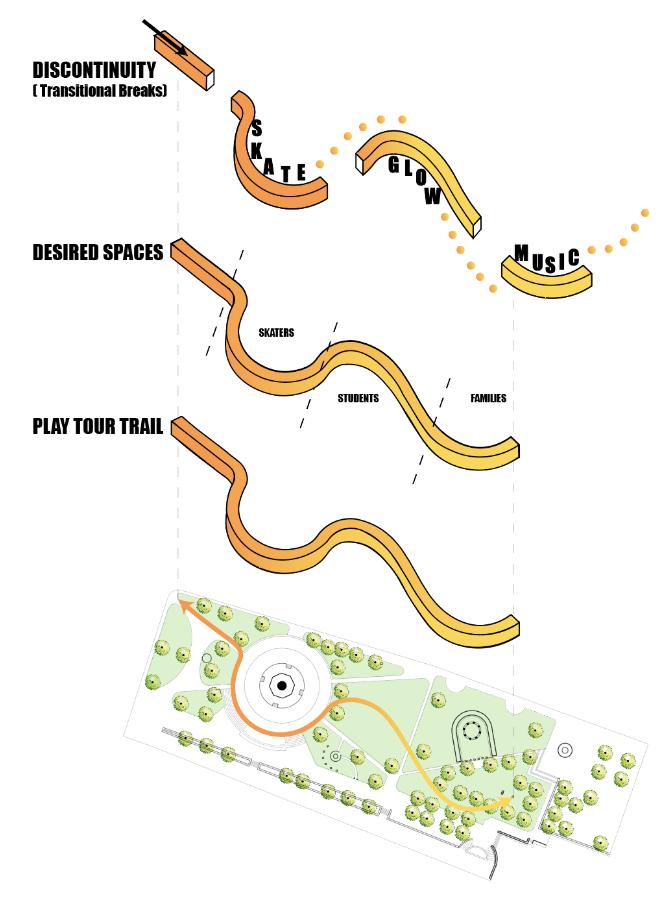
Proposed
In this daytime axon you see the rippling and curvature of both space, structure, and drums. This is translated from the skate area, play/gathering area, to an area of reflection/contemplation, and back to the skate/rest area from north to south.
Proposed
In the night time view we observe the continuation of light and ripples. The lights are a glow that are activated by movement. On a typical night, this makes people feel more at ease traveling from one end to the other. In times of protest, it allows participants to feel both seen and heard.
GATHERING PIT: PLAY AND PROTEST
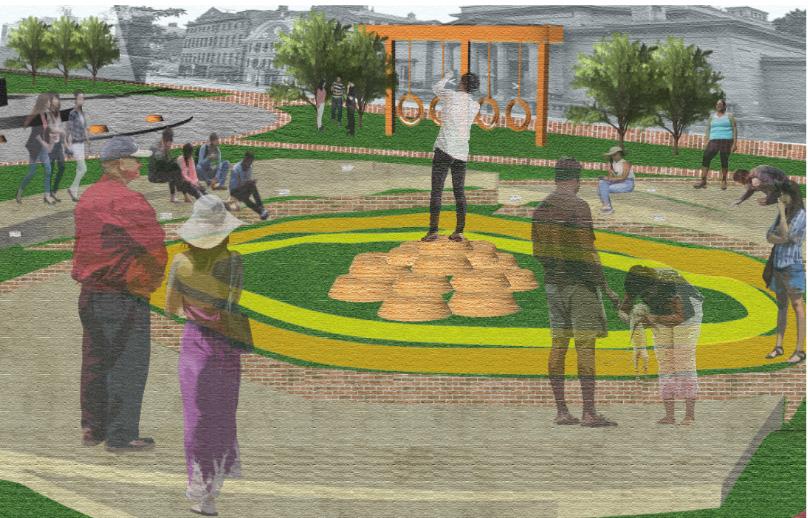
When creating our gathering pit, we started off with a full circle, inspired by the sense of togetherness and unity associated with the shape. From reseearch, we learnt how the original habitants of the Rhode Island were 5 indiginous tribes made up of 5 different groups the Pequots, the Nipmucs, the Niantics, the Narragansetts, and the Wampanoags. We decided to show how different fragments of people then and today share this site, and by creating a merge between these different groups, from the indiginous tribes to the now multicultural Providence, the pit could represent and embrace the coming together of different cultures and people.
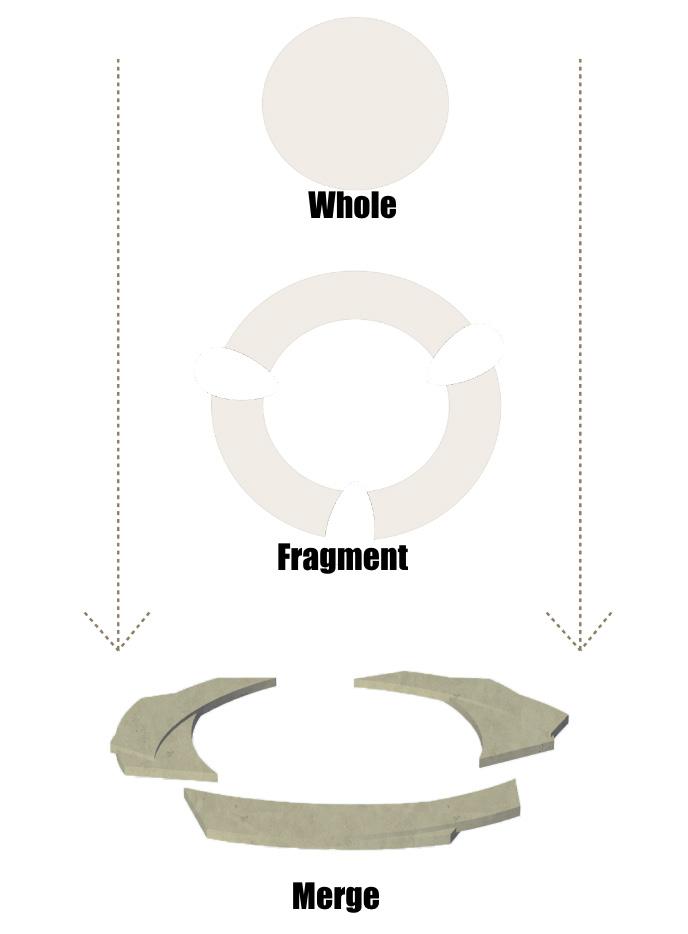
ENCLOSURE: REFLECTION
As tribute to Indigenous and African culture, graphic work of influential people of color and Indignous people is screen printed onto a glass enclosure that serves as both a shelter and memorial, surrounded furthere by drums. It pays respect to the 5 native tribes of Rhode Island, the forced displacement of Africans to Rhode Island, and lastly the Black Regiment that was comprised of both cultures.
